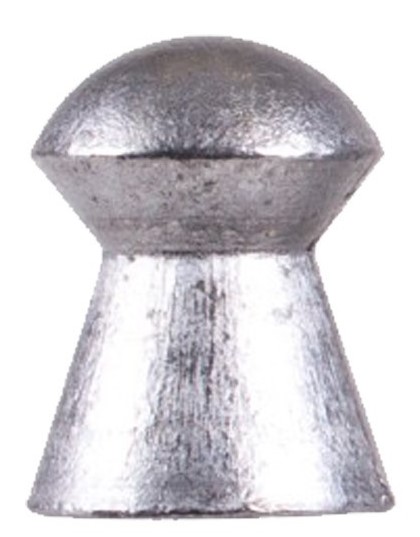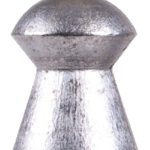Why do most airguns shoot pellets instead of bullets? It comes down to stability and accuracy. To begin to understand how this works, we need to examine some basic pellet dynamics and how they make our airguns shine.

Pellet Design
The most basic aspect of pellet dynamics starts with their shape, as they all have the same basic design. Starting at the top, you’ll find the head of the pellet, which is generally calibrated to match the bore of the rifle. You’ll often find the “head size” listed on match-grade pellets, as it can make a huge difference in achieving maximum accuracy. Next, you have a narrow waist which is followed by a skirt that flares out to the diameter of the bore or a little larger. We’ll get to why that matters later.
The head of the pellet has more mass as it’s larger than the waist and solid vs hollow like the skirt. The combination creates a tiny “arrow” design that provides stabilization in flight. If you want to get an idea of how this works, take a rag or handkerchief and put a couple of heavy rocks in the center. Now close it up and tie a string or use a rubber band just behind the rocks so that you have a “ball” of heavy material, followed by the rubber band or string, followed by the flared excess of the rag or handkerchief. Now, throw it. You’ll see that the “head,” or heavy part of the handkerchief, orients forward, and the excess material, i.e., “skirt,” drags behind. Because of the design, it will always orient with the heavy part forward.
Head Size and Skirting
The head size refers to the exact diameter of the head of the pellet. The “.22” of .22 caliber (5.6mm) refers to the inside diameter of the rifle bore, but not all airgun barrels are created equal. For this reason, pellets come in specific head sizes, and competitive shooters will spend hours sorting pellets based on exact head sizes to optimally match their specific airguns. So, a .22 caliber pellet like the H&N Field Target Trophy may come in multiple head sizes like 5.53, 5.54, and 5.55, allowing shooters to match the best size for their airgun.
Most airgun barrels are rifled, so the bore has lands and grooves, creating potential air gaps around the pellet. This makes it difficult to get a tight seal. If a pellet doesn’t get a tight seal, then air will blow past the pellet in the bore, and you will lose performance. Pellet skirts are hollow and are often larger in diameter than the head size. The thin hollow skirt of the pellet expands when the blast of air hits it, creating a tight seal and maximizing the potential velocity and performance.
Contact Area: Pellets vs. Slugs
Because of their shape, pellets make very little contact with the bore. There’s enough contact on the edge of the head and the skirt so that the rifling does its job spinning the pellet, but not so much as to create too much drag for the air pressure to overcome. This is why slugs are less effective in most airguns. They have greater surface area in contact with the bore, which creates several issues.
In contrast to pellets, slugs are barrel shaped with a lot of surface area contacting the bore. The greater contact area creates a lot of drag, slowing down the projectile and possibly still leaving air gaps from the rifling. PCP airgun manufacturers have been able to overcome this with more air volume at higher pressures, making slugs more viable for high-powered PCPs. But breakbarrels with limited and fixed air volume have a hard time overcoming the extra drag.
Airguns that can drive slugs will accurately have an advantage over pellets due to the slug’s better ballistic coefficient. Still, unless you are shooting past 100 yards, you may not actually see the benefit. And, since the majority of airguns are best suited for under 100 yards, pellets are still king for accuracy.
More Questions?
We offer many pellet brands to suit almost every airgun on the planet. If you are looking for the best pellet for your needs, don’t hesitate to give us a call. We are always ready to help.
